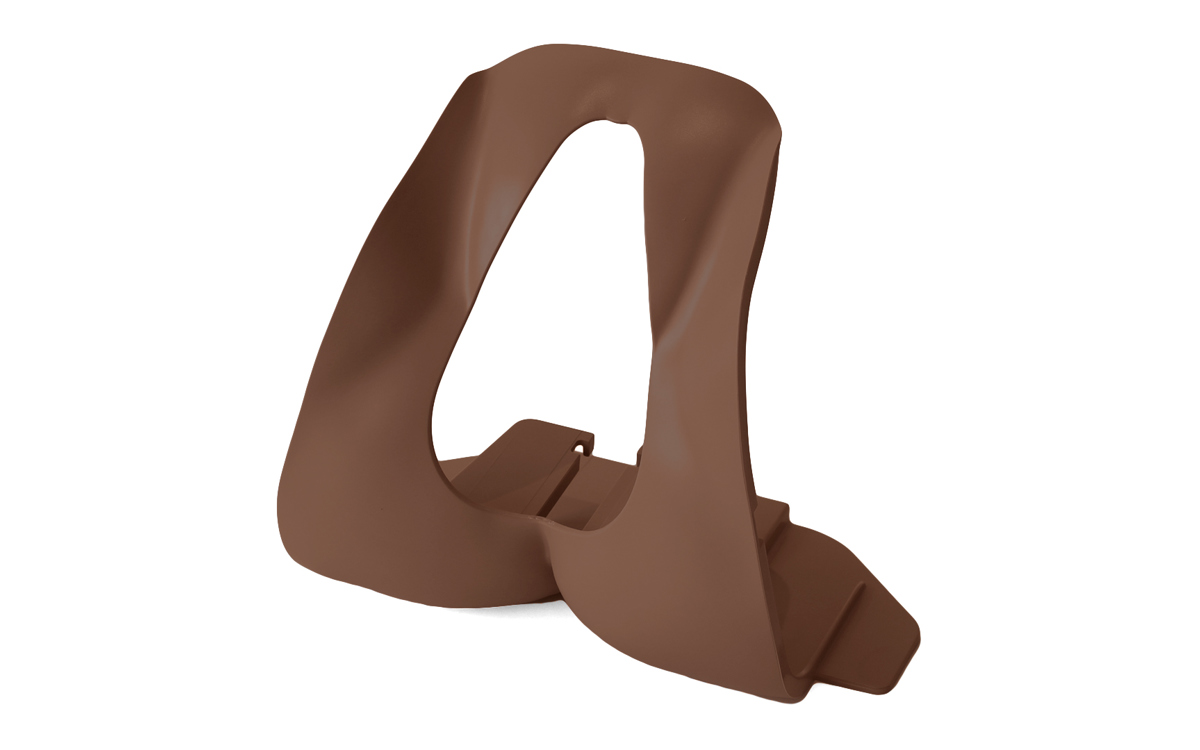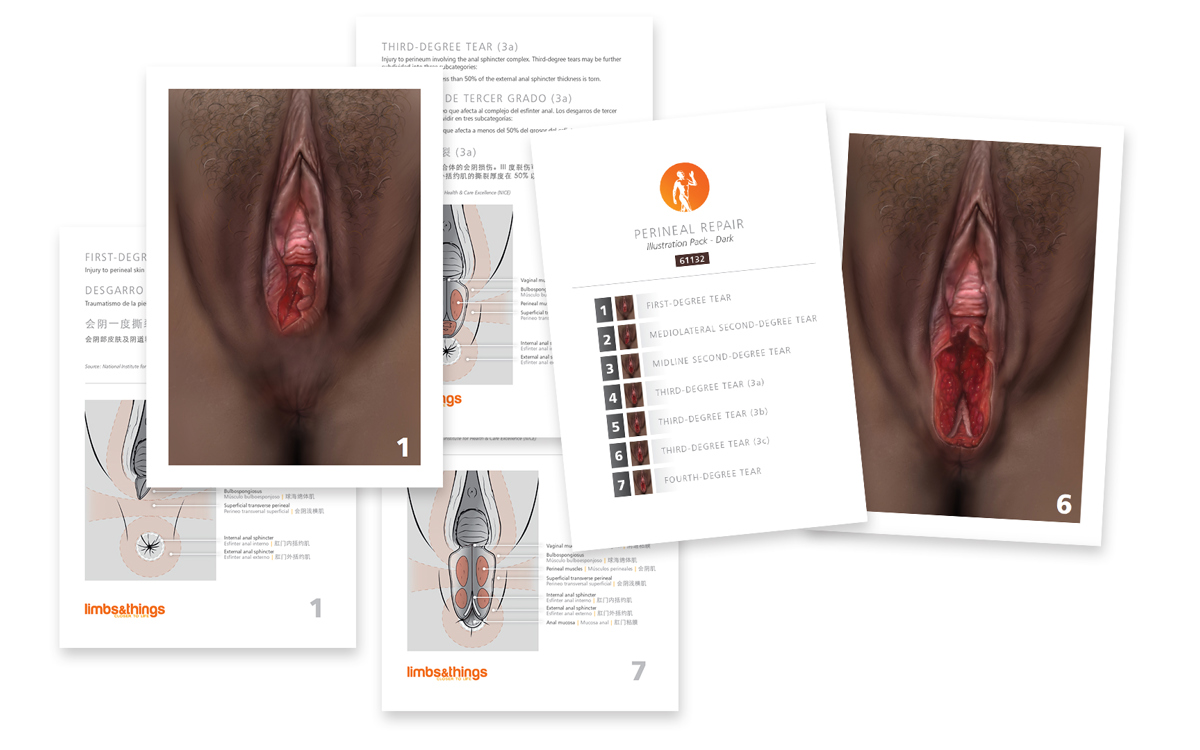






Obstetric Anal Sphincter Injuries (OASIS) are complications that occur during a vaginal delivery, also referred to as 3rd and 4th degree perineal lacerations.
Developed in collaboration with Mr Abdul Sultan, Consultant Obstetrician and Gynecologist with Croydon University Hospital (UK), the Anal Sphincter Repair Trainer presents ideal practise for 4th degree perineal repairs.
The Anal Sphincter Repair Trainer can be used for end-to-end and overlap repair of the external anal sphincter, as well as repair of the internal anal sphincter and anal mucosa.
Overview
- Anatomically accurate model for teaching perineal laceration suturing
- Includes Illustration Pack to aid in identification of key landmarks and internal anatomy of each degree of perineal trauma
- Silicone module can be positioned for examination or suturing
- Improved rubber has increased accuracy when suturing through the perineal muscle
Realism
- Can be used alongside PROMPT Flex trainers to increase realism in the simulation
- All essential layers of tissue are present, and can accept repeated suturing
- Soft skin on the trainer has a similar drag and strength to human skin
- Improved, thinner skin layer, more anatomically accurate and allowed for more accurate placement of subcuticular sutures
Versatility
- Quick and easy set up
- When in place, there are two resting positions for the perineum:
- Relaxed, unhooked for suturing
- Tensed, hooked to stand for examination
- Compact and portable, clamps can be used on a variety of surfaces to secure for training
Cleaning
- Clean the product with a soft damp cloth, warm water and mild detergent, after every training session
- Allow to dry thoroughly before storing
Safety
- Note: We recommend using non-toothed forceps with this trainer. (Although you can use toothed dissectors and forceps while performing perineal repairs, they may cause damage to the silicone and reduce the life span of the product)
- This product is latex free
- Ensure clamps are securely fastened before beginning a procedure
- Wear gloves at all times and handle soft silicone block with care
- When packing away, remove all parts from the Stand so that they are not under undue tension whilst in storage
- Take care when removing sutures, to ensure that the block doesn’t suffer damage (We recommend using small sharp scissors to remove sutures)
Simulated Patient
- This product can be used with a simulated patient
- This product can be used in conjunction with the PROMPT Flex birthing simulator and a simulated patient
Anatomy
- Vaginal mucosa
- Distinct Perineal dermis and epidermis
- Posterior Fourchette
- Perineal muscles (bulbocavernosus and transverse presented together)
- External anal sphincter with pararectal fat
- Internal anal sphincter
- Anal mucosa
Skills Gained
- Recognition of internal anatomy
- Perform infiltration (administering local anaesthesia, we recommend this is done ‘dry’)
- Identification of degree of tear using the pill rolling technique
- Repair techniques for fourth degree perineal tears
- Tissue layer identification and handling
- Deep musculature suturing
- Subcuticular suturing
- Superficial suturing
- Dissection of anal sphincter muscles
- End-to-end or overlap repair of the external sphincter
- Repair of internal sphincter and rectal mucosa
Comparison |
Light | Dark |
|---|---|---|
| What's included | 61102 | 61122 |
| Anal Sphincter Repair Block (x2) | 61107 | 61129 |
| Perineal Repair Stand with Clamps | 61109 | 61129 |
| Perineal Repair Block Loading Handle | 61110 | 61110 |
| Perineal Repair Illustration Pack | 61112 | 61132 |
| Lubricant (Adams Aquagel) | 00293 | 00293 |
Product Contains
References
The standards and Criteria for the Accreditation of Nursing and Midwifery Courses Leading to Registration states that midwives in Australia are expected to have experience of actual or simulated episiotomy and perineal suturing.
Clinicians that choose to specialise in obstetrics and gynaecology would learn to perform an episiotomy and perineal repair by meeting the following milestones: - Core module 11: Management of delivery - Episiotomy and Perineal trauma and repair (ST1-ST5) - Core module 12: Postpartum Problems - Repair Episiotomy, 2nd, 3rd and 4th laceration - Advanced Labour Ward - perform the repair of 3rd/ 4th degree perineal tear (ST6-ST7)
-
User Guide
61102 61122 Anal Sphincter Repair Trainer UG V3 Web
PDF | 1017.8 KB
-
Product Brochure
PROMPT Flex Range UK V13
PDF | 1.9 MB
-
Product Brochure
PROMPT FLEX 范围 - CN
PDF | 3.1 MB
-
Product Brochure
PROMPT Flex Gamme - FR
PDF | 2.8 MB
-
Product Brochure
PROMPT Flex Programm - DE
PDF | 2.8 MB
-
Product Brochure
Gama PROMPT Flex -ES
PDF | 2.8 MB
How is the Anal Sphincter Repair simulator different to the midline and mediolateral models?
This silicone model can be used for 4th degree perineal tears, as well as lesser, 3rd degree tears. The Midline and Mediolateral Repair trainers are designed for regional techniques of 2nd degree repairs.
To give full coverage of repair techniques, the Anal Sphincter Repair simulator was created to aid in training of more severe perineal lacerations. 3-10% of women suffer with this degree of trauma following a vaginal delivery, proper management helps maintain postpartum health of the birth mother.
What instruments and sutures can be used with this simulator?
Standard perineal suturing tools can be used, we recommend the following options:
- Non-toothed forceps
- Non-toothed dissectors
- 2-0, 3-0 or 4-0 vicryl rapide sutures (or equivalent)
- Small sharp scissors (for removing sutures at the end of an exercise)
Please note: You can use toothed forceps and dissectors with this trainer, however, due to the composition of the silicone, longevity of the anal block may be affected.


















